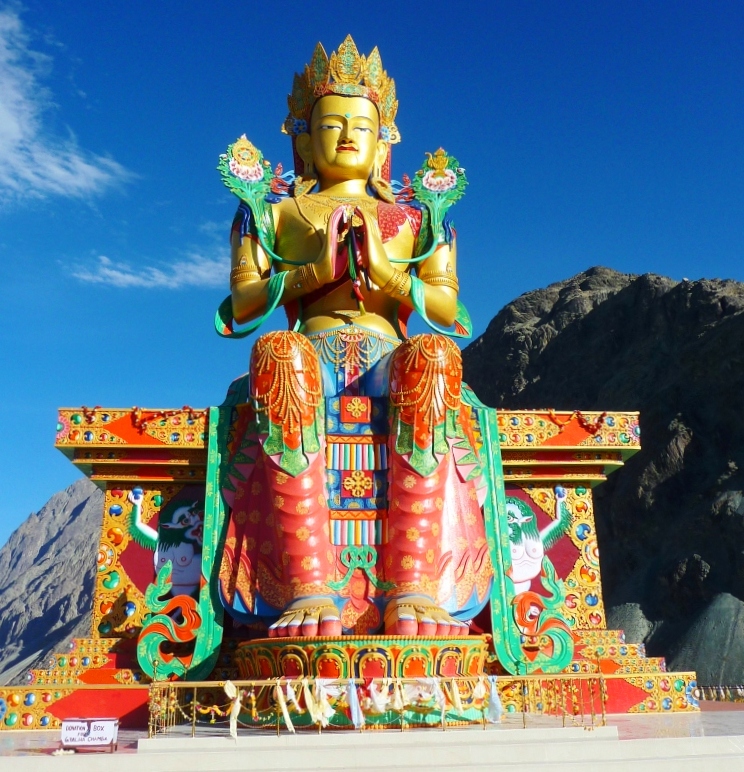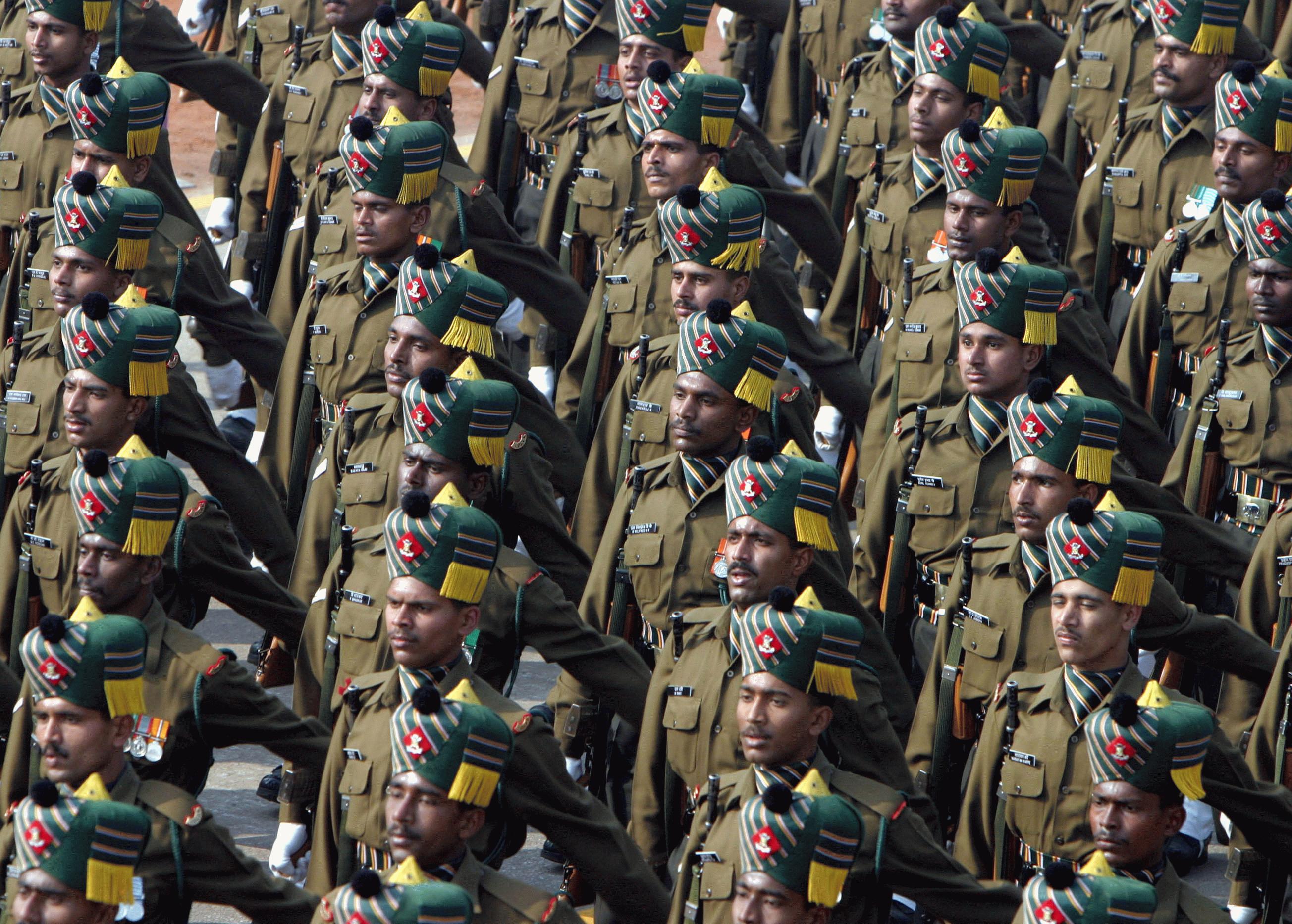|
Dosmoche
Dosmoche is a festival celebrated in Ladakh, India. It is celebrated in Leh, Likir and Diskit monasteries. It is the last festival of New Year Celebrations, the other one is Losar. The two-day Dosmoche festival is a gazetted holiday for Leh district and Zanskar Sub Division. Dosmoche is also known as the "Festival of Scapegoat" and is one of Ladakh's most popular prayer festivals. History Dosmoche was started by the rulers of Ladakh. The festival was started during kingdom of King Lhachen Gongdup/ Lha-chen-Dnos-grub (1295–1320). He fought two battles with invaders from Nyungti (Kullu of Himachal Pradesh) to inhibit the exterminatory forces of the battles. Sacred mask dances, known as Cham dance, are carried out in the courtyard of the old chapel, below the gates of the Leh Palace. Lamas are drawn from different monasteries from across Ladakh on a rotation basis for this festival. Celebrations High pitched sound of gyaling with the periodic sound of the cymbals echoed off th ... [...More Info...] [...Related Items...] OR: [Wikipedia] [Google] [Baidu] |
Culture Of Ladakh
The culture of Ladakh refers to the traditional customs, belief systems, and political systems that are followed by Ladakhi people in India. The languages, religions, dance, music, architecture, food, and customs of the Ladakh region are similar to neighboring Tibet. Ladakhi is the traditional language of Ladakh. The popular dances in Ladakh include the khatok chenmo, cham, etc. The people of Ladakh also celebrate several festivals throughout the year, some of the most famous are Hemis Tsechu and Losar. Background Ladakh is the northmost part of India. Ladakh shares a border with Tibet to the east, the Indian state of Himachal Pradesh and the union territory of Jammu and Kashmir to the south, and Gilgit-Baltistan to the west. It extends from the Siachen Glacier in the Karakoram range jn the north to the Great Himalayas to the south. Formerly, it was a part of the Indian state of Jammu and Kashmir, but after the Jammu and Kashmir Reorganisation Act (2019), it was separated from J ... [...More Info...] [...Related Items...] OR: [Wikipedia] [Google] [Baidu] |
Diskit Monastery
Diskit Monastery also known as Deskit Gompa or Diskit Gompa is the oldest and largest Buddhist monastery (gompa) in Diskit, in the Nubra Valley in the Leh district of Ladakh, India. It belongs to the Gelugpa (Yellow Hat) sect of Tibetan Buddhism. It was founded by Changzem Tserab Zangpo, a disciple of Tsong Khapa, founder of Gelugpa, in the 14th century. It is a sub-gompa of the Thikse gompa. Lachung Temple and Hundur Monastery are also located nearby, the latter is below the main road near a bridge. The monastery has statue of Cho Rinpoche (Crowned Buddha) in the prayer hall, a huge drum and several images of fierce guardian deities. An elevated cupola of the monastery depicts a fresco of the Tashilhunpo Monastery of Tibet. The monastery administration runs a school, with support from a non-government organization known as the "Tibet Support Group", which has computer facilities and teaches science subjects, in English, to Tibetan children of the region. A popular festiv ... [...More Info...] [...Related Items...] OR: [Wikipedia] [Google] [Baidu] |
Ladakh
Ladakh () is a region administered by India as a union territory which constitutes a part of the larger Kashmir region and has been the subject of dispute between India, Pakistan, and China since 1947. (subscription required) Quote: "Jammu and Kashmir, state of India, located in the northern part of the Indian subcontinent in the vicinity of the Karakoram and westernmost Himalayan mountain ranges. From 1947 to 2019, Ladakh was part of the Indian state of Jammu and Kashmir, which has been the subject of dispute between India, Pakistan, and China since the partition of the subcontinent in 1947." Quote: "Jammu and Kashmir: Territory in northwestern India, subject to a dispute between India and Pakistan. It has borders with Pakistan and China." Ladakh is bordered by the Tibet Autonomous Region to the east, the Indian state of Himachal Pradesh to the south, both the Indian-administered union territory of Jammu and Kashmir (union territory), Jammu and Kashmir and the Pakistan-administ ... [...More Info...] [...Related Items...] OR: [Wikipedia] [Google] [Baidu] |
Mahayana Buddhism
''Mahāyāna'' (; "Great Vehicle") is a term for a broad group of Buddhist traditions, texts, philosophies, and practices. Mahāyāna Buddhism developed in India (c. 1st century BCE onwards) and is considered one of the three main existing branches of Buddhism (the other being ''Theravāda'' and Vajrayana).Harvey (2013), p. 189. Mahāyāna accepts the main scriptures and teachings of early Buddhism but also recognizes various doctrines and texts that are not accepted by Theravada Buddhism as original. These include the Mahāyāna Sūtras and their emphasis on the ''bodhisattva'' path and ''Prajñāpāramitā''. ''Vajrayāna'' or Mantra traditions are a subset of Mahāyāna, which make use of numerous tantric methods considered to be faster and more powerful at achieving Buddhahood by Vajrayānists. "Mahāyāna" also refers to the path of the bodhisattva striving to become a fully awakened Buddha (''samyaksaṃbuddha'') for the benefit of all sentient beings, and is thus als ... [...More Info...] [...Related Items...] OR: [Wikipedia] [Google] [Baidu] |
New Year Celebrations
New is an adjective referring to something recently made, discovered, or created. New or NEW may refer to: Music * New, singer of K-pop group The Boyz Albums and EPs * ''New'' (album), by Paul McCartney, 2013 * ''New'' (EP), by Regurgitator, 1995 Songs * "New" (Daya song), 2017 * "New" (Paul McCartney song), 2013 * "New" (No Doubt song), 1999 *"new", by Loona from '' Yves'', 2017 *"The New", by Interpol from ''Turn On the Bright Lights'', 2002 Acronyms * Net economic welfare, a proposed macroeconomic indicator * Net explosive weight, also known as net explosive quantity * Network of enlightened Women, a conservative university women's organization * Next Entertainment World, a South Korean film distribution company Identification codes * Nepal Bhasa language ISO 639 language code * New Century Financial Corporation (NYSE stock abbreviation) * Northeast Wrestling, a professional wrestling promotion in the northeastern United States Transport * New Orleans Lakefront Ai ... [...More Info...] [...Related Items...] OR: [Wikipedia] [Google] [Baidu] |
Buddhist Festivals In India
Buddhism ( , ), also known as Buddha Dharma and Dharmavinaya (), is an Indian religion or philosophical tradition based on teachings attributed to the Buddha. It originated in northern India as a -movement in the 5th century BCE, and gradually spread throughout much of Asia via the Silk Road. It is the world's fourth-largest religion, with over 520 million followers (Buddhists) who comprise seven percent of the global population. The Buddha taught the Middle Way, a path of spiritual development that avoids both extreme asceticism and hedonism. It aims at liberation from clinging and craving to things which are impermanent (), incapable of satisfying ('), and without a lasting essence (), ending the cycle of death and rebirth (). A summary of this path is expressed in the Noble Eightfold Path, a training of the mind with observance of Buddhist ethics and meditation. Other widely observed practices include: monasticism; " taking refuge" in the Buddha, the , and the ; and ... [...More Info...] [...Related Items...] OR: [Wikipedia] [Google] [Baidu] |
Public Holidays In India
Public Holidays in India, also known as Statutory Holidays, or colloquially Government Holidays, consist of a variety of cultural, nationalistic, and religious holidays that are legislated in India at the Government of India, union or State governments of India, state levels. While many of these holidays are honored and acknowledged nationwide, state legislation varies in regard to which are officially recognized. India, being a culturally diverse society, celebrates many holidays and festivals, but there are only three national festivals: Republic Day (India), Republic Day (26 January), Independence Day (India), Independence Day (15 August), and Gandhi Jayanti (2 October). In India, there are more than 30 grand festivals which are celebrated in major parts of India along with other state festivals. States have local festivals depending on prevalent religious and linguistic demographics. Popular Hindu festivals like Makar Sankranti, Pongal (festival), Pongal, Maha Shivratri, J ... [...More Info...] [...Related Items...] OR: [Wikipedia] [Google] [Baidu] |
February Observances
February is the second month of the year in the Julian and Gregorian calendars. The month has 28 days in common years or 29 in leap years, with the 29th day being called the ''leap day''. It is the first of five months not to have 31 days (the other four being April, June, September, and November) and the only one to have fewer than 30 days. February is the third and last month of meteorological winter in the Northern Hemisphere. In the Southern Hemisphere, February is the third and last month of meteorological summer (being the seasonal equivalent of what is August in the Northern Hemisphere). Pronunciation "February" is pronounced in several different ways. The beginning of the word is commonly pronounced either as or ; many people drop the first "r", replacing it with , as if it were spelled "Febuary". This comes about by analogy with "January" (), as well as by a dissimilation effect whereby having two "r"s close to each other causes one to change. The ending of th ... [...More Info...] [...Related Items...] OR: [Wikipedia] [Google] [Baidu] |
Buddhist Holidays
This is a list of holidays celebrated within the Buddhist tradition. List *Vesak: The Buddha's birthday is known as Vesak and is one of the major festivals of the year. It is celebrated on the first full moon day in May, or the fourth lunar month which usually occurs in May or during a lunar leap year, June. In some countries this has become an occasion to not only celebrate the birth but also the enlightenment and parinirvana of the Buddha. *Parinirvana Day: also known as Nirvana Day, a Mahayana Buddhist holiday celebrated in East Asia, Vietnam and the Philippines usually on February 15. *Magha Puja: Magha Pujwronga is an important religious festival celebrated by Buddhists in Thailand, Cambodia, Sri Lanka and Laos on the full moon day of the third lunar month (this usually falls in February or March) * Buddha Jayanti: In South Korea, the Philippines, and China, it is celebrated in April 8 in Lunar calendar. Also known as "Hanamatsuri", it is celebrated April 8. In Japan, baby ... [...More Info...] [...Related Items...] OR: [Wikipedia] [Google] [Baidu] |
Gregorian Calendar
The Gregorian calendar is the calendar used in most parts of the world. It was introduced in October 1582 by Pope Gregory XIII as a modification of, and replacement for, the Julian calendar. The principal change was to space leap years differently so as to make the average calendar year 365.2425 days long, more closely approximating the 365.2422-day 'tropical' or 'solar' year that is determined by the Earth's revolution around the Sun. The rule for leap years is: There were two reasons to establish the Gregorian calendar. First, the Julian calendar assumed incorrectly that the average solar year is exactly 365.25 days long, an overestimate of a little under one day per century, and thus has a leap year every four years without exception. The Gregorian reform shortened the average (calendar) year by 0.0075 days to stop the drift of the calendar with respect to the equinoxes.See Wikisource English translation of the (Latin) 1582 papal bull '' Inter gravissimas''. Second, ... [...More Info...] [...Related Items...] OR: [Wikipedia] [Google] [Baidu] |






